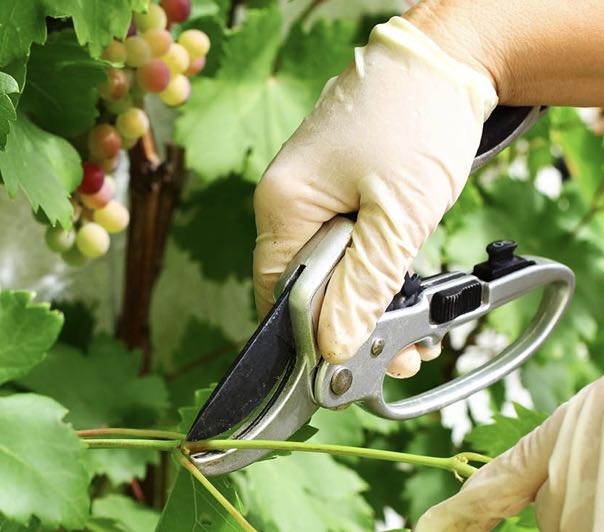Summer in the Vineyard Sets the Stage for Harvest (WineEnthusiast)

For some people, summer means warm temperatures, long days and carefree vibes. For vignerons, summer is hard work. After they prepare the vineyards through the winter and spring, winemakers must shepherd grapes to the finish line. They pull leaves and drop fruit, monitor for diseases and pests, and protect against the weather.
Life of the Vine
Summer sets the stage for harvest. The vines go through the critical stages of fruit set, veraison and ripening. Harvest for some earlier-ripening varieties in hotter regions now starts in the summer, too.
As spring ebbs into summer, flowers develop a seed and grape berry. This phase, fruit set, establishes the amount of crop the vineyards will yield, and the amount of wine they will produce.
The vine’s berries are small, hard and green. High in organic acid, they have little sugar. Summer’s heat triggers the grapes to ripen, much like cherries and blueberries. As a grape’s glucose and fructose increase, acids levels drop.
“For me, summer is the time when I can see the finish line,” says Dana Grande, grower relations manager at Jordan Winery. “Vine growth is slowing down, most management tasks are completed and we are awaiting veraison for our final thinning pass.”
Veraison is when a grape accumulates color, much like how a pale strawberry turns bright red. White and gray grapes like Pinot Gris turn yellow, gold and even pink, while red varieties become maroon, purple and black.
In white varieties, the color changes as chlorophyll is replaced with carotenoids. In red grapes, the pigment comes from anthocyanins.
During this time, tannins and other phenolics increase until the grapes have reached the optimal picking window. This window represents the winemaker’s ideal balance of sugar and physiological or phenolic ripeness. The grapes have the exact flavor, color, potential alcohol, structure and texture sought.
Vineyard Management
In warmer years and regions, tasks like preventative mildew spraying, fertilization and shoot thinning and positioning occur in the spring.
“In summertime, the living is a bit easier,” says Grande. “Springtime is so busy. We need to be everywhere doing everything and the minute we begin, we are falling behind.”
As summer hits, the pace at Jordan slows. “It is nice to take a breath and focus just on managing the vine’s balance,” says Grande. “Mostly, the vines have achieved their maximum shoot length, and it’s our job to maintain those shoots and leaves.”
Canopy management is the complex process of balancing sunlight, shade and air circulation around fruit clusters. Leaves shade fruit and protect them from heat and sunburn. However, vigorous leafy growth can create too much shade and stifle air flow. This can foster mildew, mold and other diseases like black rot from fungus.
Leaf removal and positioning shoots offers balance for optimal ripening and airflow. Vineyard managers strive for “not too little, not too much,” says Grande.

